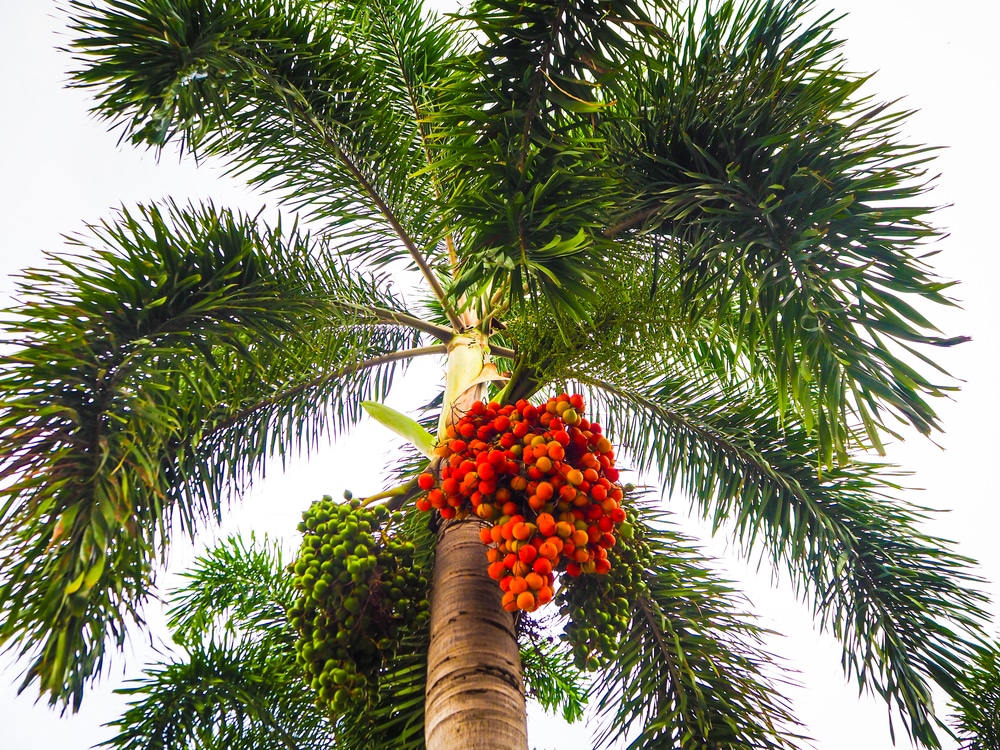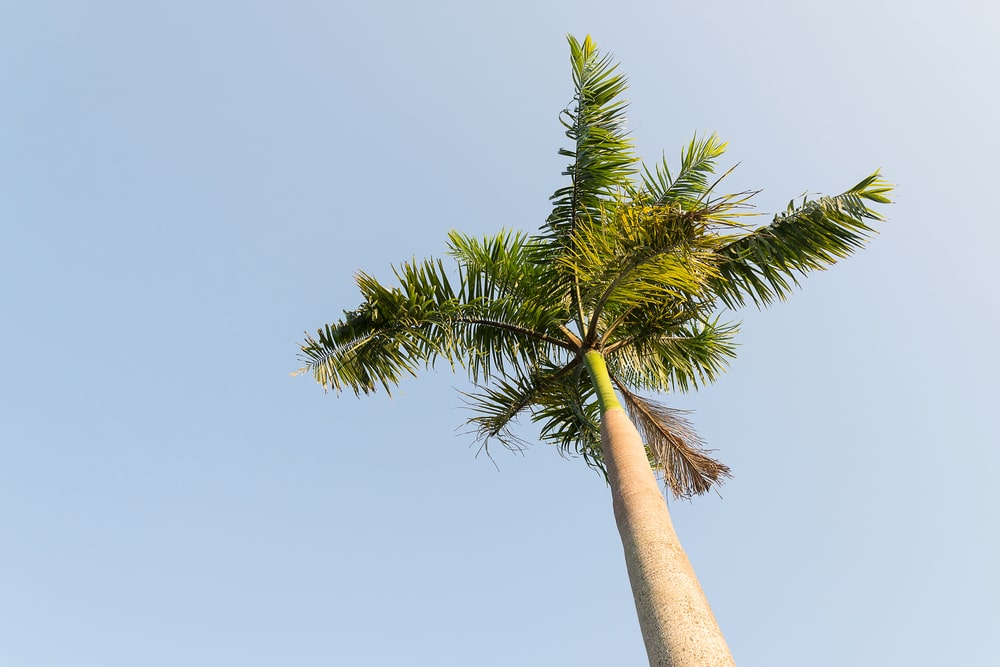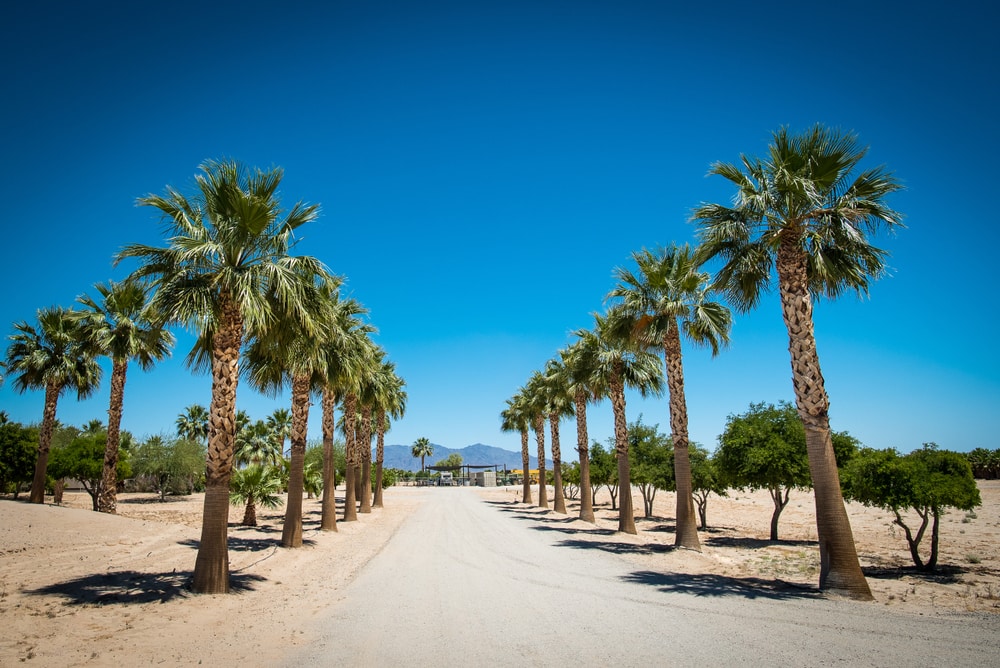Imagine a land of palm trees and cacti, of desert heat and red-rock canyons. This is Arizona, one of the most unique and beautiful states in the country. From the Petrified Forest to the Grand Canyon, Arizona is home to some of the most stunning natural wonders in the world. Along with the natural wonders and the scenic views, the state is also home to a variety of different plant life. One of Arizona’s most popular and iconic plants is the palm tree.
They’re everywhere – and many area landmarks wouldn’t be the same without these trees. You’ll see palm trees literally scattered throughout the Valley – in front of homes, businesses, parks, and more. You may think that since they’re so prevalent, palm trees must be native to Arizona. But the truth is, they’re not.
Are Palm Trees Native to Arizona?
Despite its prevalence in the state, the palm tree is not native to Arizona. In fact, palms are not native to any desert climate. So how did these tropical trees end up in the middle of the desert? The story of how palm trees came to Arizona is actually a pretty interesting one.
The first palm trees in Arizona were brought over by early immigrants and settlers who were looking to create an oasis in the desert. They wanted to remind them of their tropical homes back in Mexico, Florida, and California. These early settlers planted palm trees around their homes and businesses, and over the years, they slowly began to spread.
Sorry to disappoint, but those palm trees you see everywhere in Arizona are not native to the state, except for one. The California Fan Palm is the only palm tree that is native to Arizona. You won’t see them anywhere, though. You can find them at the Kofa National Wildlife Refuge in Yuma, Arizona. Where it came from isn’t clear, but it’s believed that the California Fan Palm was the tree that was brought by birds or coyotes over the past thousand years.
Where are Palm Trees Native To?
The palm (Arecaceae) species is believed to have over 2,6000 different varieties. Each variety has its own unique appearance and is native to different parts of the world.
In general, regardless of their species, palm trees do best in hot and moist climates. This is why you’ll often find them in their native habitats near the tropics and in subtropical regions. Some of the most popular palm tree destinations include Brazil, Central America, Florida, Africa, and Southeast Asia.
Palm Trees That Can Grow in Arizona
Although there is only one native palm tree in Arizona, there are a few different species that have been introduced to the state and have thrived. These trees are often found in landscaping and can be seen throughout the southern parts of Arizona. Here are some:
Queen Palm
Characterized by its graceful, feathery leaves, Queen Palm is one of the most popular palm trees in Arizona. A tall palm that displays a slender trunk, its prominent rings make it easily recognizable. The Queen Palm can grow up to 50 feet tall and loves full sunlight.
Mexican Blue Pam
Not all palm trees have lush green leaves. The Mexican Blue Palm is a beautiful blue-green palm native to Mexico. It’s a smaller palm, but its unique color sets it apart from other palms in Arizona. Its leaves gracefully arch upwards from the slender trunk.
Pindo Palm
Its distinct gray-green fronds make the Pindo Palm one of the most recognizable palm trees in Arizona. Its fronds cascade beautifully from the slender trunk, which is often covered in spines.
Pygmy Date Palm
This variety falls under the miniature palm tree category. But because of its slow growth, it creates a dense bush, making it a popular landscaping choice for many homes throughout the state.
Windmill Palm
Surprisingly, there are palm trees such as Windmill palms that can tolerate both heat and cold. These palms are easily recognizable by their unique fan-shaped leaves. A slow-growing palm, and its jade-colored leaves are always a welcome sight in any Arizona landscape.
Are Palm Trees Native to Arizona: Final Thoughts
The majority of palm trees you see throughout the state aren’t native to Arizona, except for the California Fan Palm. But because of the state’s hot climate, palm trees have become a popular landscaping choice. Surely, these palms provide a touch of tropics, no matter where they’re from.


